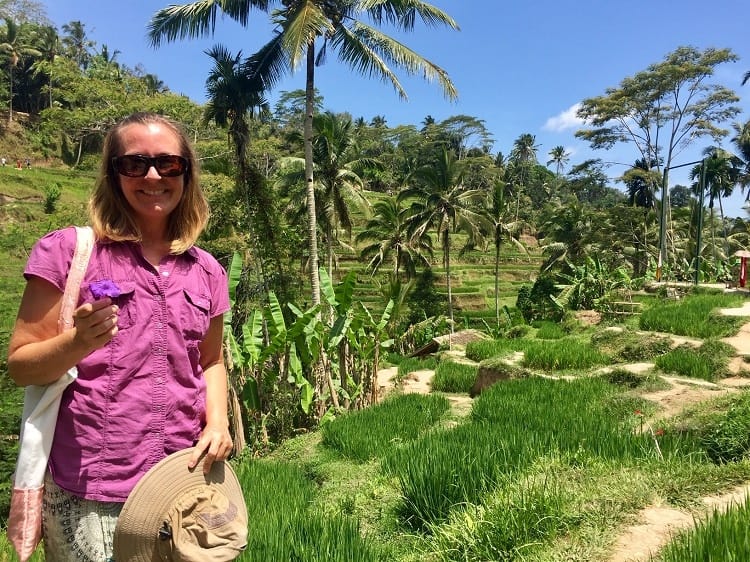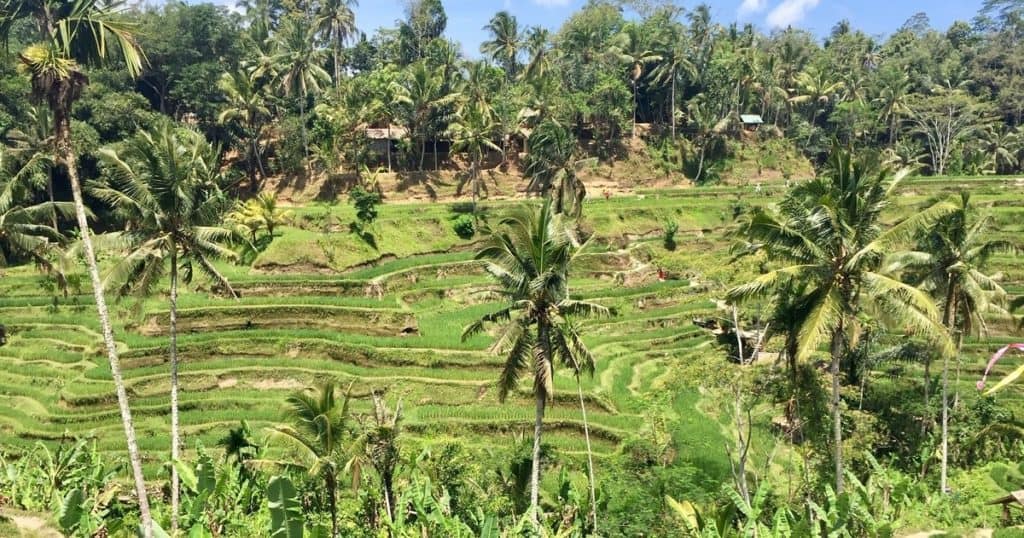Last Updated on June 3, 2023 by Ellen
Bali’s countryside is more beautiful than any city center. We spent a day seeing sites near Ubud that didn’t cost a lot of money, and they were (mostly) all a gorgeous escape from the city center. From rice terraces to jungle, waterfalls to holy water in temples – it feels good to get out of the city, and to escape tourists at a few of the spots on this list.
Rent a motorbike for cheap, or hire a driver. Either way won’t break the bank. We hired a driver in a car for a half-day tour and his time for nearly six hours cost us $21. There was admission at some sites, but it was nominal and entrance is always free for locals like our driver.
Here are the sites we visited in the order of our hand-curated route, what you will see, and what it cost.
6 sites near Ubud
1. Tegunungan waterfall
The Tegunungan waterfall is about 9 kilometers from Ubud’s center (20 minute drive on double-lane, congested road). It’s a popular spot so we made this our first stop of the day, before tourist buses arrived from Kuta.
The waterfall is an easy walk down, but we didn’t do that (I’m recovering from broken ribs). There is a viewing platform for tourists to overlook the waterfall and the surrounding jungle. There are even some “Instagram” stations for tourists. Swimming is allowed near the falls.
Admission was 20,000 rupiah per person (less than $1.50) whether you go down or not.

Here is the Wikipedia page for the Tegunungan waterfall.
2. Candi Tebing Tegallinggah Temple
The Candi Tebing Tegallinggah Temple is about 8 kilometers from the Tegunungan Waterfall – another 15 or 20 minutes by car. There is a small natural waterfall at this site, along with an old abandoned temple. Locals have used the water to bathe and heal for hundreds of years.
We walked down concrete and stone stairs past rice terraces and into the jungle. Off to the left, you will see a wooden staircase. Take the new wood stairs. They are much less slippery than the ancient stone stairs, which are constantly covered with water that runs down the hillside from the rice terraces. No swimming at this site; the abandoned temple and the bathing and praying areas were sort of interesting.
There were no other tourists here during our time in the late morning, and that was the best part about this place of all these sites near Ubud.
Admission was 15,000 each (just more than $1).
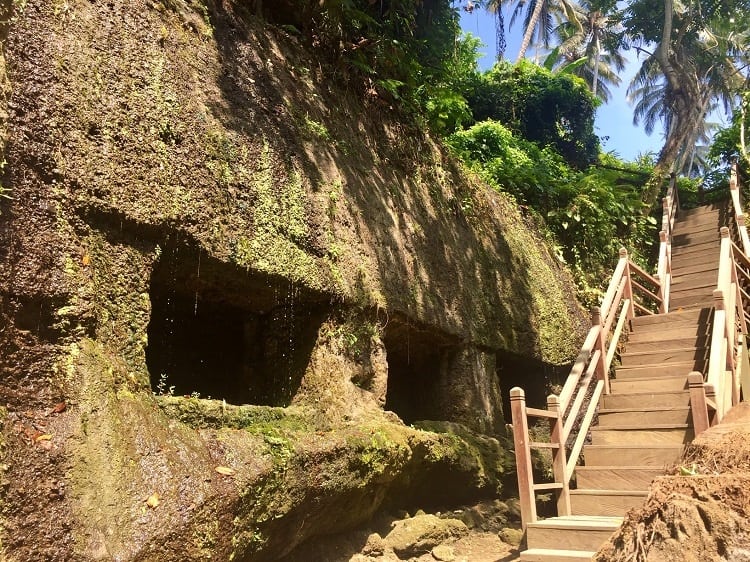
Here is the Facebook page.
3. Goa Rang Reng Waterfall
The Goa Rang Reng Waterfall was another six kilometers on our route, about a 15 minute drive, and one of the sites near Ubud definitely worth a visit. This waterfall was my favorite: hardly any tourists, decent stairway down, natural ‘tubs’ to soak, water rushing over rocks with hypnotic rhythms. On one side, there was a rope to help ascend to the top where there were more pools.
As we were leaving, a large group tour was descending. We were there before noon, so I cannot speak to if the place fills up in the afternoons.
Admission was 15,000 rupiah per person (just over $1).
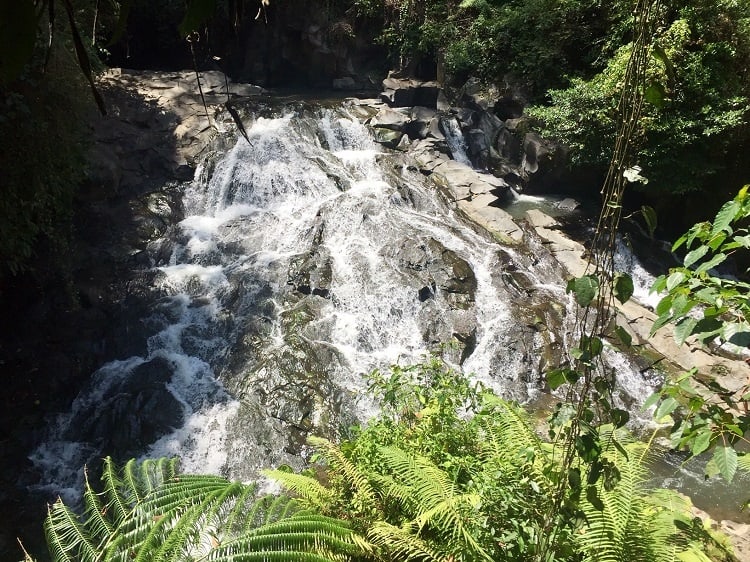
I could not find a Wikipedia or Facebook page for this site – but there are travel blog entries about this. There is a cave on the top, but we did not go in.
4. Tirta Empul Temple
The Tirta Empul Temple is a Hindu water temple another 16 kilometers on our route, or about a 30 minute drive. It’s been a site for prayer, meditation, bathing in holy water, healing, special events, etc., for thousands of years. Today, it still serves the original purpose, but it is quite touristy.
Certain sections are blocked off to the casual observer for ‘prayer only’. But anyone can enter the healing pools — with proper sarongs, and women must not have their periods (seriously — there were signs!). And there are no shortage of people taking selfies and Insta-shots. (Yes, us included.)
Admission was 50,000 per person (about $3.50)
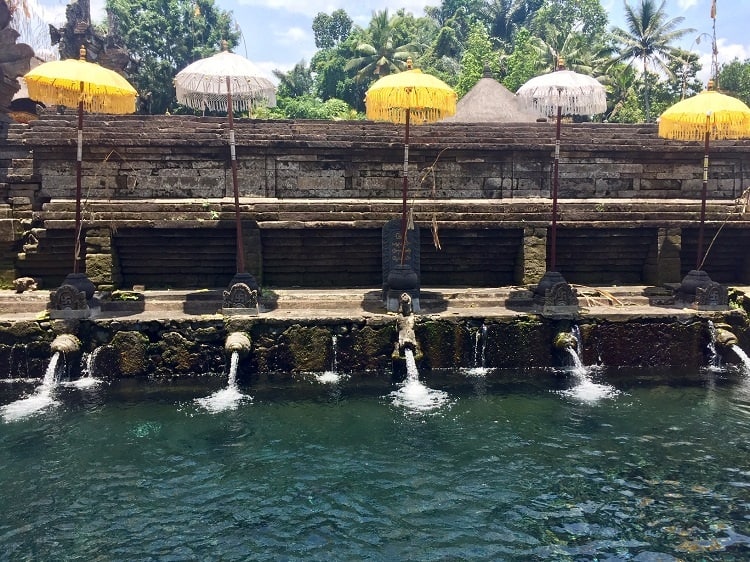
See the temple’s Wikipedia page for more background.
Tip: leave through the entrance instead of the place marked “exit” or you will be forced to navigate through one of the longest paths of souvenir shops I’ve ever experienced.
5. Tegallalang Rice Terraces
The Tegallalang rice terraces are 7 kilometers from the Tirta Empul Temple, about a 20 minute drive. It’s a gorgeous spot, and it’s one of the sites near Ubud that’s Insta-famous, surrounded by selfie-stations and souvenir stands everywhere you look.
Find a spot and walk down. There are staircases leading down into the fields from the street in between tourist stands. Our driver led us to one of many.
Enjoy the lush green under brilliant sun — and see women tourists in red dresses posing for clicks. Seriously. More people here were interested in looking good in the scenery instead of looking at the scene.
No admission, unless you want to pose on a Insta-swing, or Insta-basket, or Insta-heart, etc.
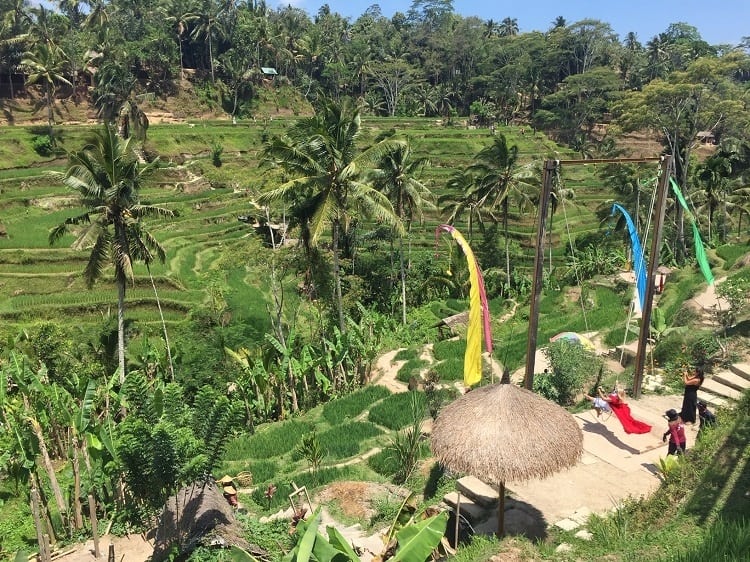
6. Kokokan Village (heron bird colony)
Kokokan Village, for some unknown reason, attracts thousands and thousands of herons. It’s about 6 kilometers, or 15 minutes from the rice terraces.
The birds have been roosting in the village for as long as anyone can remember. And, as you might image, the street, the leaves, and anything under the trees, are covered with bird poop.
The best time to go is in the early morning and early evening. We didn’t expect to see an Alfred Hitchcock-style Birds scene. But we did see many young herons who don’t hunt all day. We stopped here because it was on our way back to Ubud anyway.
No admission — at the time of day we went. But apparently, locals ask visitors for “donations” during prime-time viewing, around 6:00 a.m. and again at 6:00 p.m.
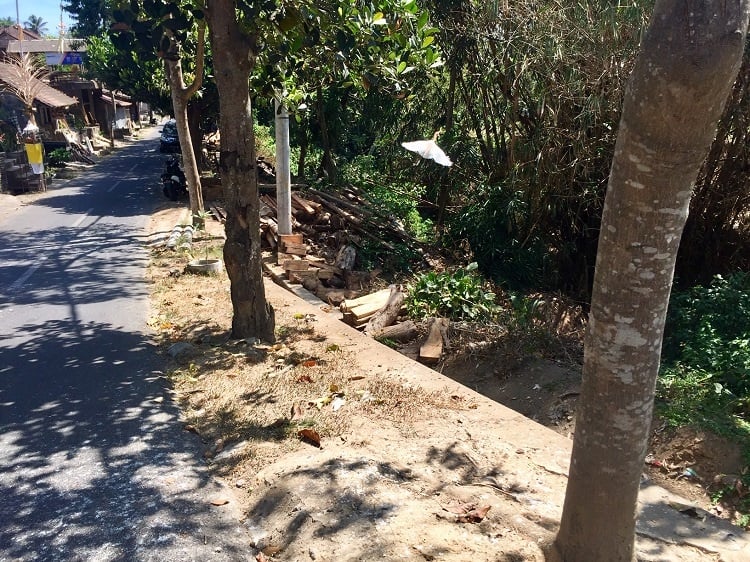
Here is a link to the village location on Google maps – because I met some tourists who could not find this place.
**Personal thoughts**
We had a great time on our nearly six-hour tour in a private, air-conditioned SUV. But we are part of the tourism problem — albeit a small part.
Overtourism is a real thing in Ubud. Ubud would not be the way it is today – a “mercantile madhouse” – if tourists didn’t visit Ubud and other places around Bali. Our friend Chuck believes the real Ubud is still here – outside the city center. I’m not so sure.
On the drive between the rice terraces and the ‘bird village’, there was a long stretch of road lined with wholesale souvenir shops. These places make souvenirs and send them to stores in Kuta or Uluwatu or Ubud or wherever. Piles of key chains, endless tchotchke items, furniture (much of it real wood and actually gorgeous), countless home decor goods, rack after rack of jewelry, large wooden penises with bottle openers on the bases. Yea. You read that right.
At one point on this stretch of road with wholesale shops, which must have been a couple of miles long, I rolled down my window and snapped a photo burst.
I found this photo in that burst:
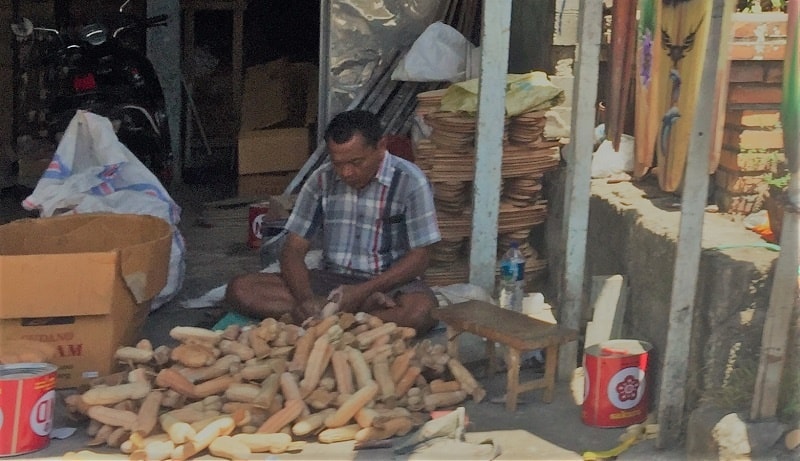
A Balinese man sitting on the ground in front of one of those wholesale shops, carving wooden penises that will eventually have bottle openers inserted into the bases.
The end products will look like what we have seen in so many other cities around the world, including Athens:
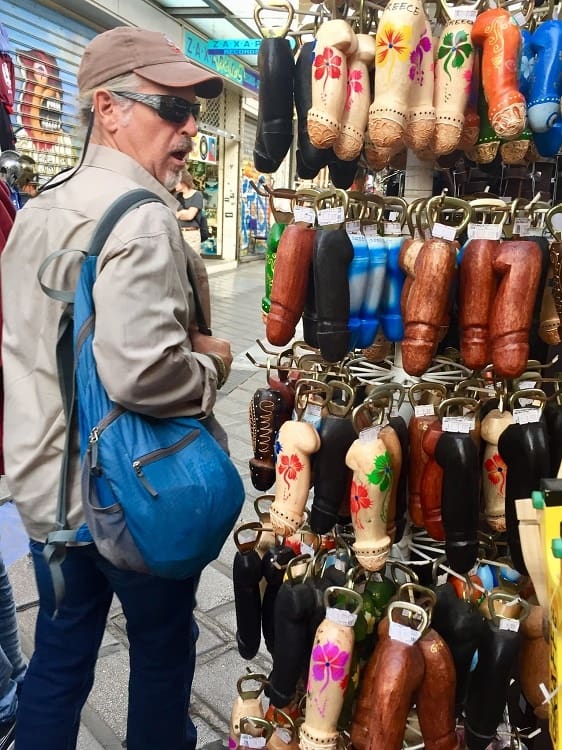
That souvenir stand wasn’t the real Athens. Or was it? The man carving penis bottle openers isn’t part of the real Ubud, or the real Bali. Or, is he?
Where is the real Ubud? Where is the real ‘name-any-city-visited-by-tourists’ that idealists say can be found outside the tourist zone? I used to be such an idealist, but I tend more towards realism these days.
Maybe I am less hopeful about finding the ‘real’ culture because entire communities, regions, are connected, shifted, changed because of the tourism money that pours into places. Original cultures currently are under a Reformation, getting quickly redefined by tourism and by an apparent, inexplicable demand for penis bottle openers with a country’s name painted onto it. Every time I see a penis bottle opener or new ‘Insta-spot’, I feel like a solid shore of culture and history is eroded and swallowed into a collective tide of meaningless ego boosting, of which I am a part.
